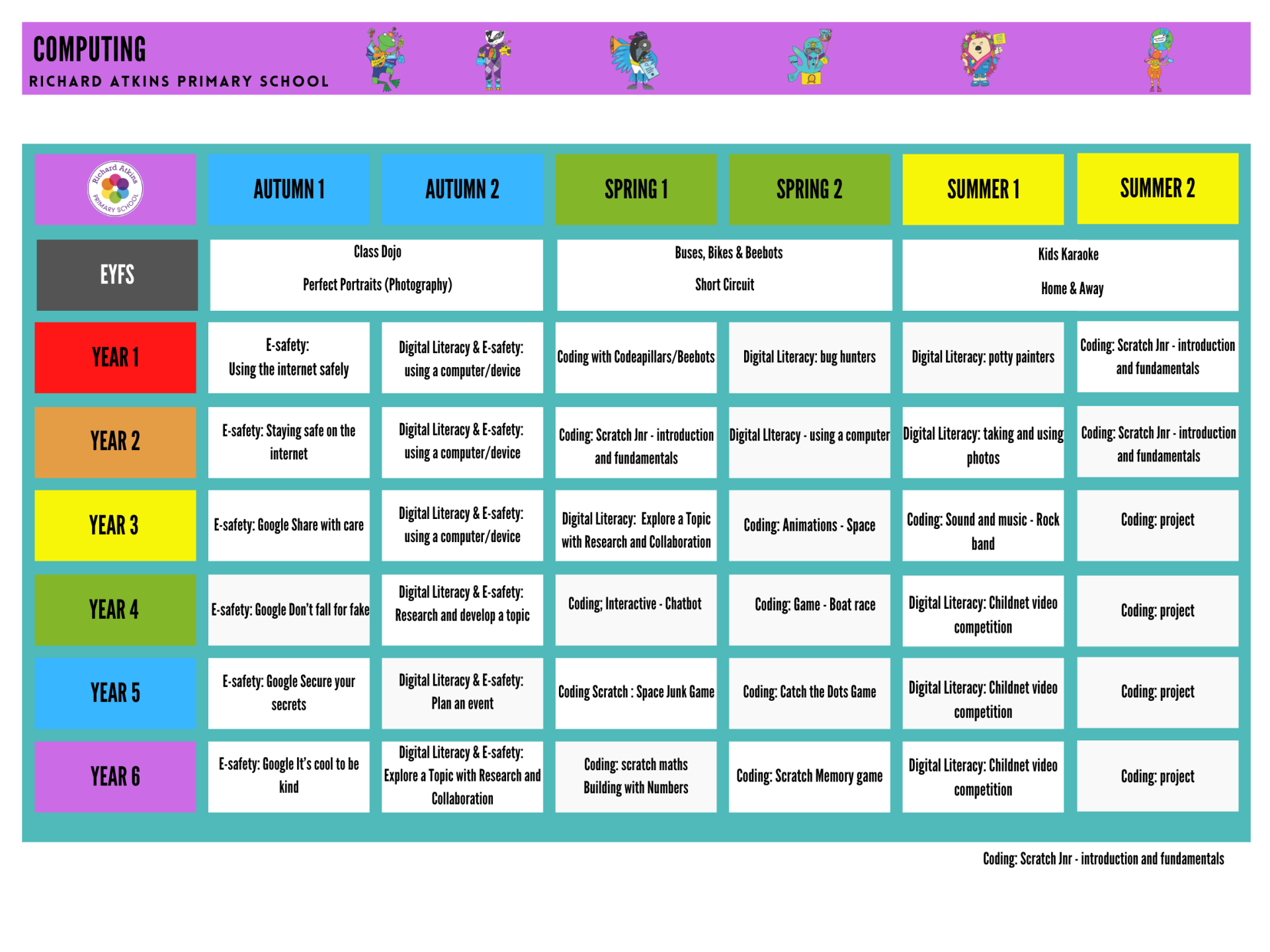Computing
At Richard Atkins we believe it is paramount that our children are taught the skills to use computers and technology with confidence and ease.
The world is becoming more and more dependent on technology and as the world of computing is constantly changing, we must prepare our children with the transferable skills that they need to adapt to these changes. The school is well resourced with computers and interactive whiteboards in each classroom connected to the internet. We also have a large number of Ipads accessible to all children.

In Key Stage 1 children are taught to:
- Understand what algorithms are, how they are implemented as programs on digital devices, and that programs are executed by following precise and unambiguous instructions
- Create and debug simple programs
- Use logical reasoning to predict the behaviour of simple programs
- Use technology purposefully to create, organise, store, manipulate and retrieve digital content
- Recognise common uses of information technology beyond school
- Use technology safely and respectfully, keeping personal information private; identify where to go for help and support when they have concerns about content or contact on the internet or other online technologies
In Key Stage 2 children are taught to:
- Design, write and debug programs that accomplish specific goals, including controlling or simulating physical systems; solve problems by decomposing them into smaller parts
- Use sequence, selection, and repetition in programs; work with variables and various forms of input and output
- Use logical reasoning to explain how some simple algorithms work and to detect and correct errors in algorithms and programs
- Understand computer networks, including the internet; how they can provide multiple services, such as the World Wide Web, and the opportunities they offer for communication and collaboration
- Use search technologies effectively, appreciate how results are selected and ranked, and be discerning in evaluating digital content
- Select, use and combine a variety of software (including internet services) on a range of digital devices to design and create a range of programs, systems and content that accomplish given goals, including collecting, analysing, evaluating and presenting data and information
- Use technology safely, respectfully and responsibly; recognise acceptable/unacceptable behaviour; identify a range of ways to report concerns about content and contact
Safety
We regularly teach the children about e-safety and online issues in order to ensure that all of our pupils are responsible and safe users of the World Wide Web and other communication technologies.

